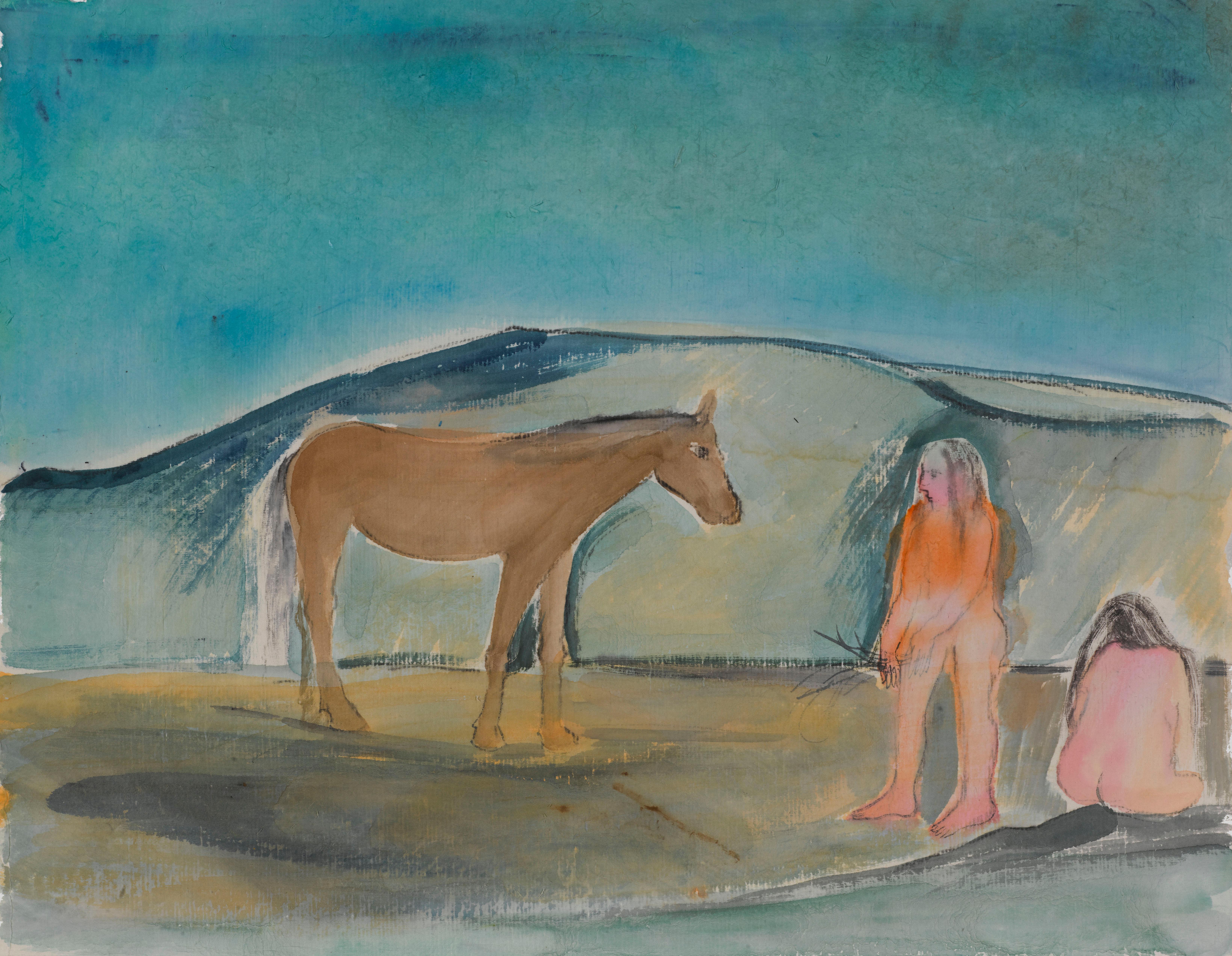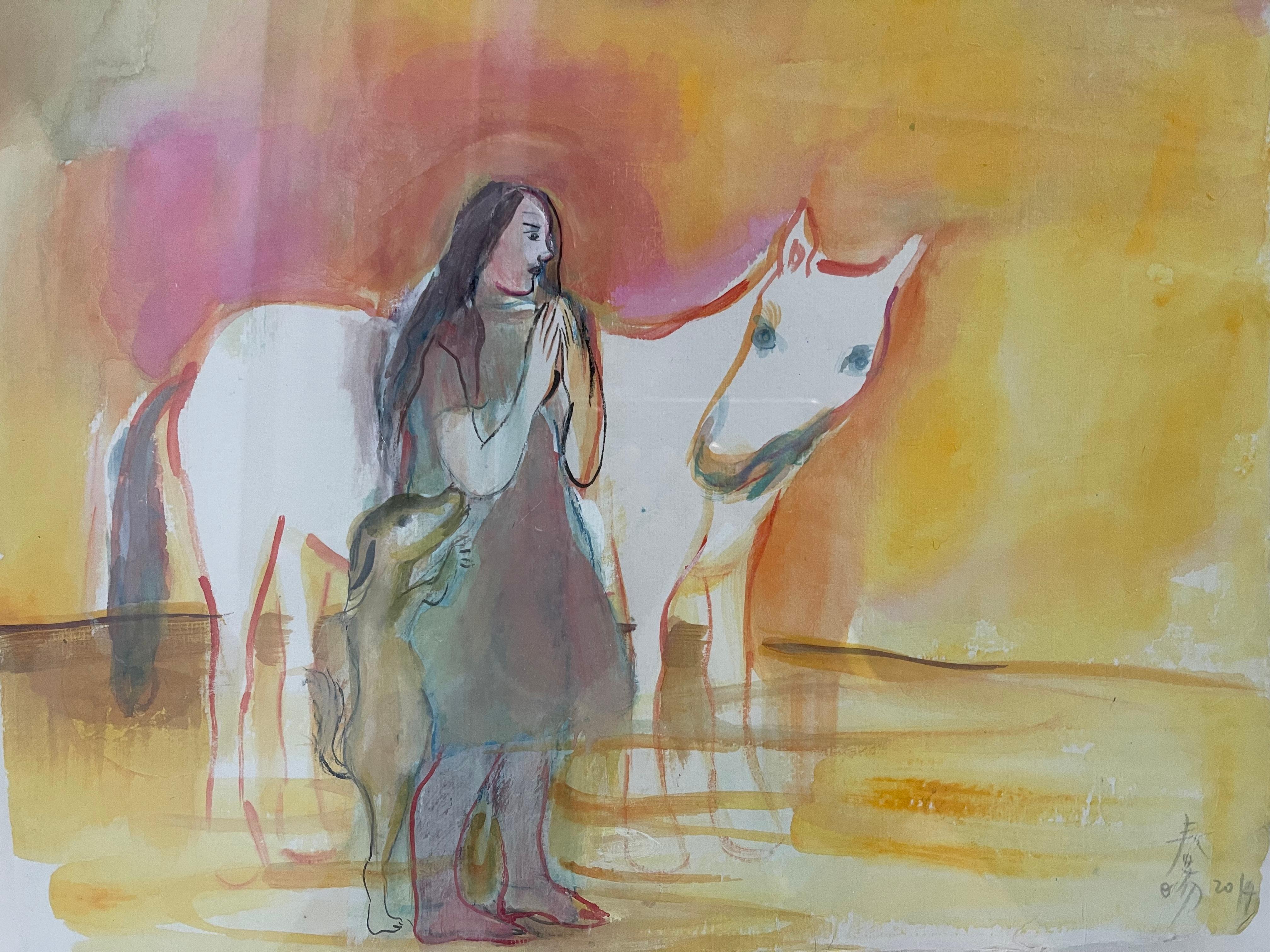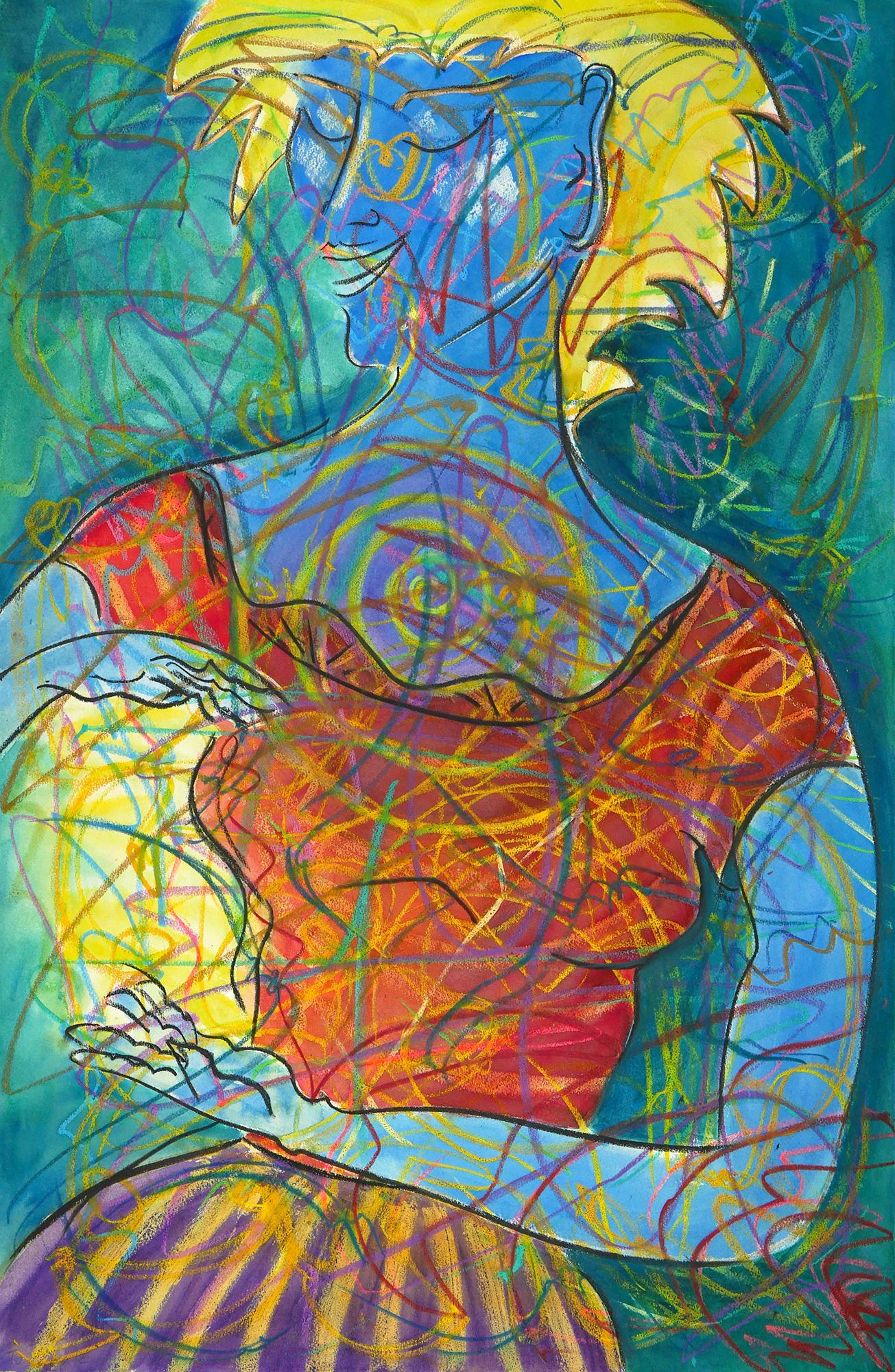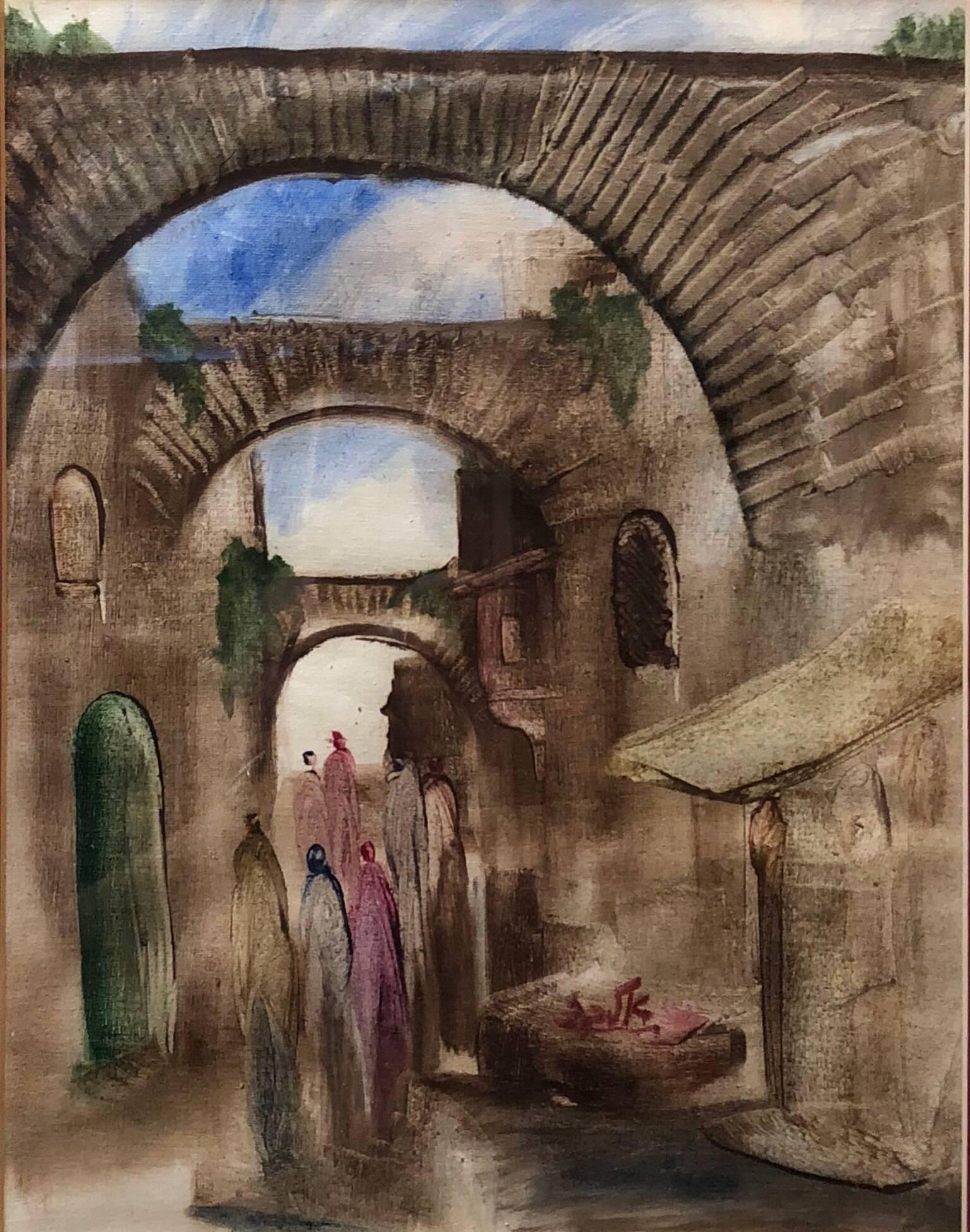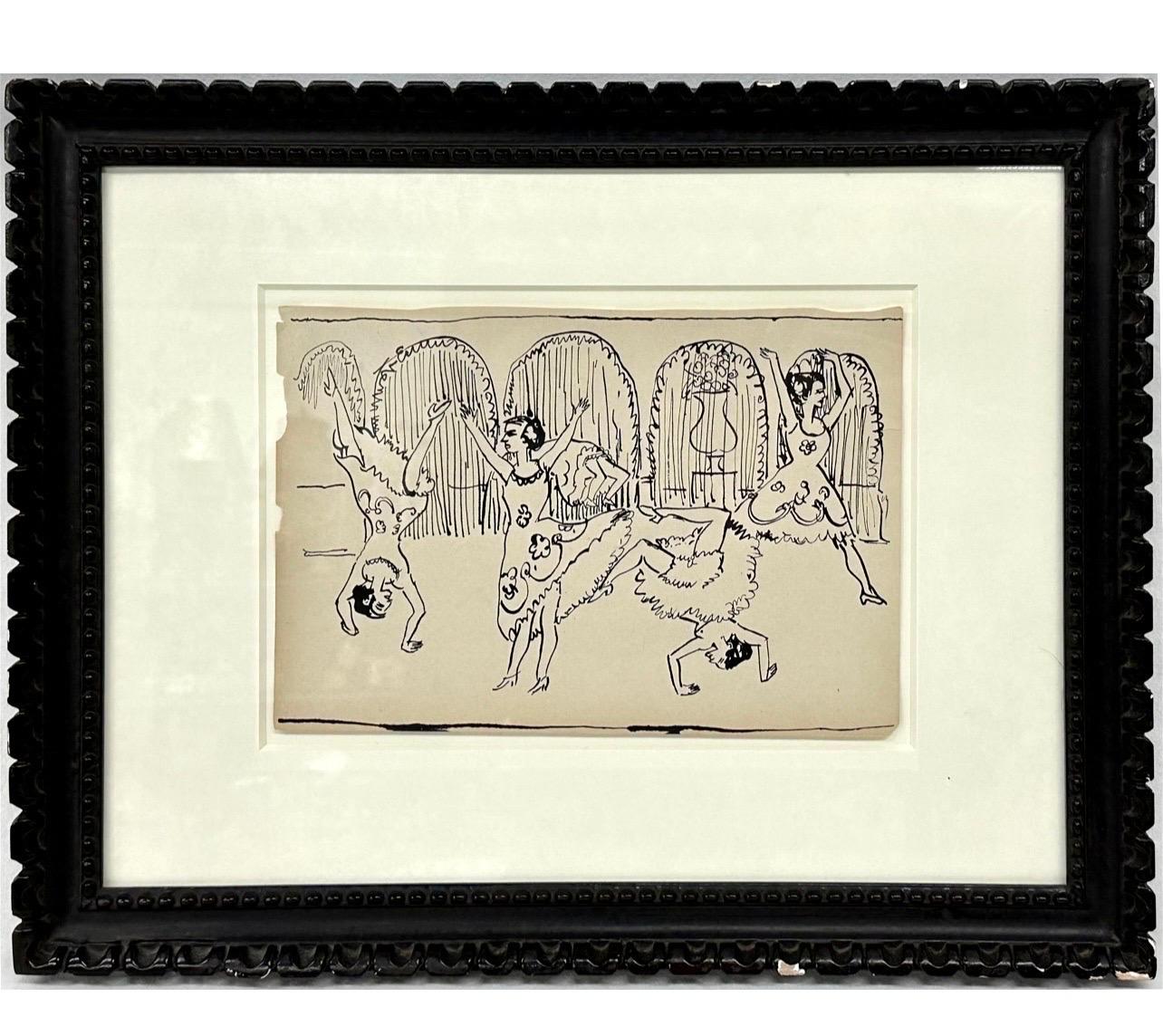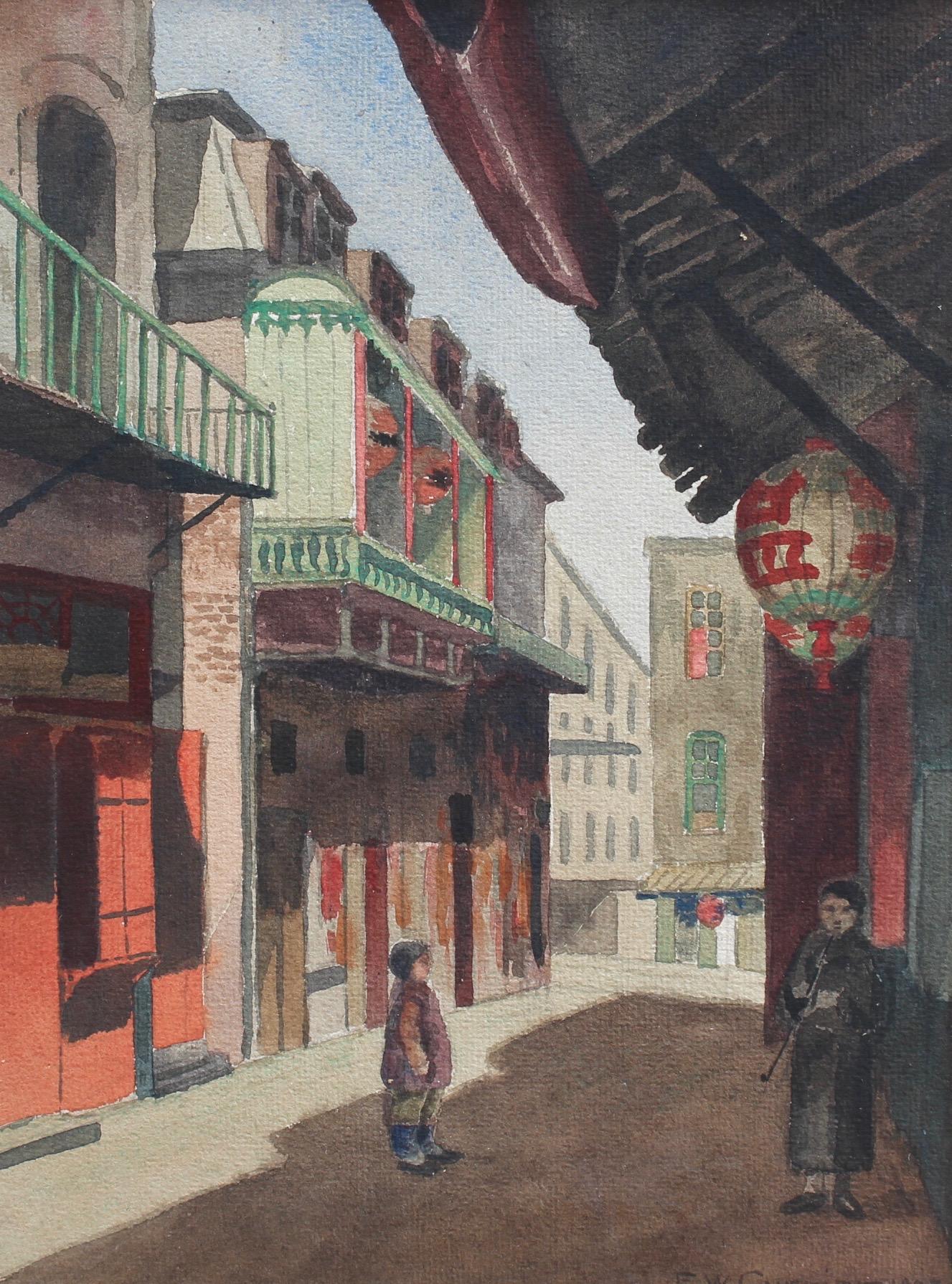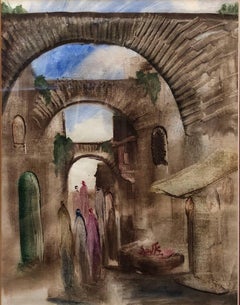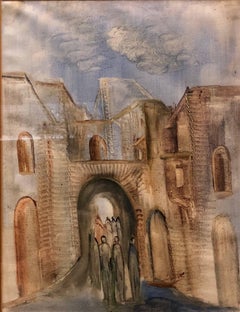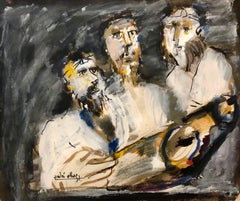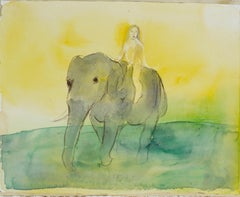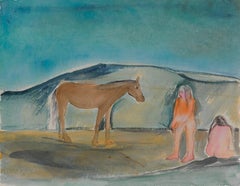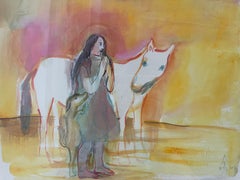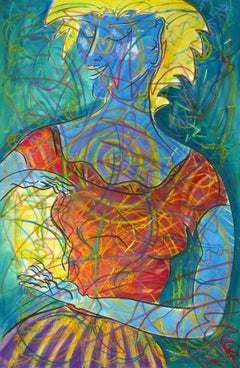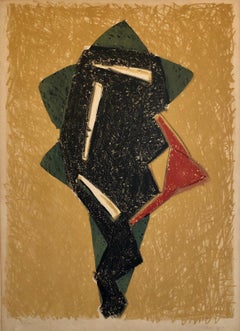
Polish French Jewish Figurative Expressionist Abstract Geometric Lithograph
View Similar Items
Want more images or videos?
Request additional images or videos from the seller
1 of 11
Pinchas MaryanPolish French Jewish Figurative Expressionist Abstract Geometric Lithographc.1970
c.1970
Price:$1,100
About the Item
- Creator:Pinchas Maryan (1927-1977, Polish)
- Creation Year:c.1970
- Dimensions:Height: 25.5 in (64.77 cm)Width: 19.75 in (50.17 cm)
- Medium:
- Movement & Style:
- Period:
- Condition:minor wear, minor tear in margin that extends slightly into image, even toning to paper. please see photos.
- Gallery Location:Surfside, FL
- Reference Number:1stDibs: LU3823821012
About the Seller
4.9
Platinum Seller
Premium sellers with a 4.7+ rating and 24-hour response times
Established in 1995
1stDibs seller since 2014
1,778 sales on 1stDibs
Authenticity Guarantee
In the unlikely event there’s an issue with an item’s authenticity, contact us within 1 year for a full refund. DetailsMoney-Back Guarantee
If your item is not as described, is damaged in transit, or does not arrive, contact us within 7 days for a full refund. Details24-Hour Cancellation
You have a 24-hour grace period in which to reconsider your purchase, with no questions asked.Vetted Professional Sellers
Our world-class sellers must adhere to strict standards for service and quality, maintaining the integrity of our listings.Price-Match Guarantee
If you find that a seller listed the same item for a lower price elsewhere, we’ll match it.Trusted Global Delivery
Our best-in-class carrier network provides specialized shipping options worldwide, including custom delivery.More From This Seller
View AllJerusalem Old City Landscape, Expressionist Judaica Israeli Painting
By Andre Elbaz
Located in Surfside, FL
In this painting the artist uses gestural brushstrokes, which causes distortion and exaggeration for emotional effect. Andre Elbaz uses as his subject figures walking in old city Jerusalem.
André Elbaz (born April 26, 1934, El Jadida, Morocco) is a famous Moroccan painter and filmmaker.
Elbaz studied art and theatre in Rabat and Paris from 1950 to 1961. He started painting only at the age of 21, until which age he had been interested mainly in theatre. A few years later, he managed to combine his two passions into a new approach in art-therapy, inventing together with his wife, a psychiatrist, the Pictodrame, which brought him world recognition.
His first exhibition, which was very successful, took place in Casablanca in 1961 and earned him an appointment as Professor at the Beaux-Arts school in Casablanca. Years later, in 1976, he exhibited his paintings at the Tel-Aviv Museum.
In parallel to his career as a painter, Elbaz is also known as a filmmaker. He produced several short films in France, Canada and the United States. One of them, La nuit n'est jamais complète (The night is never complete), won a prize at the "5th Biennale de Paris in 1967". Among the themes chosen for the many films he produced, there was a short one about the Warsaw Ghetto uprising, as well as a series of drawings entitled Seuls (Alone), with texts written by both Elie Wiesel...
Category
20th Century Expressionist Figurative Paintings
Materials
Paper, Gouache
Jerusalem Old City Landscape, Expressionist Judaica Israeli Painting II
By Andre Elbaz
Located in Surfside, FL
In this painting the artist uses gestural brushstrokes, which causes distortion and exaggeration for emotional effect. Andre Elbaz uses as his subject figures walking in old city Jerusalem.
André Elbaz (born April 26, 1934, El Jadida, Morocco) is a famous Moroccan painter and filmmaker.
Elbaz studied art and theatre in Rabat and Paris from 1950 to 1961. He started painting only at the age of 21, until which age he had been interested mainly in theatre. A few years later, he managed to combine his two passions into a new approach in art-therapy, inventing together with his wife, a psychiatrist, the Pictodrame, which brought him world recognition.
His first exhibition, which was very successful, took place in Casablanca in 1961 and earned him an appointment as Professor at the Beaux-Arts school in Casablanca. Years later, in 1976, he exhibited his paintings at the Tel-Aviv Museum.
In parallel to his career as a painter, Elbaz is also known as a filmmaker. He produced several short films in France, Canada and the United States. One of them, La nuit n'est jamais complète (The night is never complete), won a prize at the "5th Biennale de Paris in 1967". Among the themes chosen for the many films he produced, there was a short one about the Warsaw Ghetto uprising, as well as a series of drawings entitled Seuls (Alone), with texts written by both Elie Wiesel...
Category
20th Century Expressionist Figurative Paintings
Materials
Paper, Gouache
Original German Expressionist Drawing Ernst Ludwig Kirchner Women Dancing
By Ernst Ludwig Kirchner
Located in Surfside, FL
Ernst Ludwig Kirchner ( Germany 1880-1938 )
Expressionist Female Women Dancing Mixed Media on Paper Drawing or Painting Expressionism
Dimensions: 20" L 16" H in
This bore a sticker from Christies auction house and another collection sticker verso but they have been inadvertently removed. I do have the photo.
Ernst Ludwig Kirchner (1880 – 1938) was a German expressionist painter and printmaker and one of the founders of the artists group Die Brücke or "The Bridge", a key group leading to the foundation of Expressionism in 20th-century art. He volunteered for army service in the First World War, but soon suffered a breakdown and was discharged. His work was branded as "Entartete Kunst" or "degenerate" by the Nazis in 1933, and in 1937 more than 600 of his works were sold or destroyed.
Ernst Ludwig Kirchner was born in Aschaffenburg, Bavaria. His parents were of Prussian descent and his mother was a descendant of the Huguenots, a fact to which Kirchner often referred. As Kirchner's father searched for a job, the family moved frequently and Kirchner attended schools in Frankfurt and Perlen until his father earned the position of Professor of Paper Sciences at the College of technology in Chemnitz, where Kirchner attended secondary school. Although Kirchner's parents encouraged his artistic career they also wanted him to complete his formal education so in 1901, he began studying architecture at the Königliche Technische Hochschule (royal technical university) of Dresden. The institution provided a wide range of studies in addition to architecture, such as freehand drawing, perspective drawing and the historical study of art. While in attendance, he became close friends with Fritz Bleyl, whom Kirchner met during the first term. They discussed art together and also studied nature, having a radical outlook in common. Kirchner continued studies in Munich from 1903 to 1904, returning to Dresden in 1905 to complete his degree.
In 1905, Kirchner, along with Bleyl and two other architecture students, Karl Schmidt-Rottluff and Erich Heckel, founded the artists group Die Brücke ("The Bridge") later to include Emil Nolde, Max Pechstein and Otto Mueller. From then on, he committed himself to art. The group aimed to eschew the prevalent traditional academic style and find a new mode of artistic expression, which would form a bridge (hence the name) between the past and the present. They responded both to past artists such as Albrecht Dürer, Matthias Grünewald and Lucas Cranach the Elder, as well as contemporary international avant-garde movements. As part of the affirmation of their national heritage, they revived older media, particularly woodcut or woodblock prints.
Kirchner's studio became a venue which overthrew social conventions to allow casual love-making and frequent nudity. Group life-drawing sessions took place using nude models from the social circle, rather than professionals, and choosing quarter-hour poses to encourage spontaneity. In 1911, he moved to Berlin, where he founded a private art school, MIUM-Institut, in collaboration with Max Pechstein with the aim of promulgating "Moderner Unterricht im Malen" (modern teaching of painting). This was not a success and closed the following year, when he also began a relationship with Erna Schilling that lasted the rest of his life. In 1917, at the suggestion of Eberhard Grisebach [de], Helene Spengler invited Kirchner to Davos where he viewed an exhibition of Ferdinand Hodler paintings. "When I was leaving, I thought of Vincent Van Gogh's fate and thought that it would be his as well, sooner or later. Only later will people understand and see how much he has contributed to painting".
In 1921 Kirchner visited Zurich at the beginning of May and met the dancer, Nina Hard, whom he invited back to Frauenkirch (despite Erna's objections). Nina Hard would become an important model for Kirchner and would be featured in many of his works. Kirchner began creating designs for carpets which were then woven by Lise Gujer.
In 1925, Kirchner became close friends with fellow artist, Albert Müller...
Category
Early 20th Century Expressionist Figurative Drawings and Watercolors
Materials
Paper, Ink
Three Rabbis at The Torah, Expressionist Judaica Painting
By Andre Elbaz
Located in Surfside, FL
In this painting the artist uses gestural brushstrokes, which causes distortion and exaggeration for emotional effect. Andre Elbaz uses as his subject three male figures with tefilin are depicted during prayer.
André Elbaz (born April 26, 1934, El Jadida, Morocco) is a famous Moroccan painter and filmmaker.
Elbaz studied art and theatre in Rabat and Paris from 1950 to 1961. He started painting only at the age of 21, until which age he had been interested mainly in theatre. A few years later, he managed to combine his two passions into a new approach in art-therapy, inventing together with his wife, a psychiatrist, the Pictodrame, which brought him world recognition.
His first exhibition, which was very successful, took place in Casablanca in 1961 and earned him an appointment as Professor at the Beaux-Arts school in Casablanca. Years later, in 1976, he exhibited his paintings at the Tel-Aviv Museum.
In parallel to his career as a painter, Elbaz is also known as a filmmaker. He produced several short films in France, Canada and the United States. One of them, La nuit n'est jamais complète (The night is never complete), won a prize at the "5th Biennale de Paris in 1967". Among the themes chosen for the many films he produced, there was a short one about the Warsaw Ghetto uprising, as well as a series of drawings entitled Seuls (Alone), with texts written by both Elie Wiesel...
Category
20th Century Expressionist Figurative Paintings
Materials
Paper, Gouache
Modern Figurative Surrealism Watercolor, Drawing - "The Dressers"
By Gary Hansmann
Located in Surfside, FL
Gary Hansmann (1947-2008) was active/lived in California. He is known for abstract, Surrealism figure painting.
Gary William Hansmann was born Dec. 4, 1940, in San Diego to Ethel May...
Category
1980s Surrealist Figurative Paintings
Materials
Paper, India Ink, Watercolor
Modern Figurative Surrealism Watercolor, Drawing - "You Must Die For Yours"
By Gary Hansmann
Located in Surfside, FL
On heavy Arches deckle edged paper. This combines text or poetry in calligraphy on the side.
Gary Hansmann (1947-2008) was active/lived in California. He is known for abstract, Surr...
Category
1980s Surrealist Figurative Paintings
Materials
Paper, India Ink, Watercolor
You May Also Like
Expressionist Figurative water color painting- Luckiness
Located in Beijing, CN
Expressionist Figurative water color painting by Zhang Chunyang
Title: Luckiness
Dimension: 29 x 36 cm
Material: Gouache, Watercolor on Paper
D...
Category
2010s Expressionist Figurative Drawings and Watercolors
Materials
Watercolor, Gouache, Handmade Paper
Expressionist Figurative water color painting- Series The Horse Whisper No.2-24
Located in Beijing, CN
Expressionist Figurative water color painting by Zhang Chunyang
Series The Horse Whisper No.2-24
Dimension: 29 x 36 cm
Material: Gouache, Watercolor on Paper
Date: 2013
Artist Bi...
Category
2010s Expressionist Figurative Drawings and Watercolors
Materials
Watercolor, Gouache, Handmade Paper
Expressionist Figurative water color painting- Series The Horse Whisper No.2-25
Located in Beijing, CN
Expressionist Figurative water color painting by Zhang Chunyang
Series The Horse Whisper No.2-25
Dimension: 29 x 36 cm
Material: Gouache, Watercolor on Paper
Date: 2013
Artist B...
Category
2010s Expressionist Figurative Drawings and Watercolors
Materials
Watercolor, Gouache, Handmade Paper
Holder of Light, Wild Woman Series, bright color blue yellow
By Janet Morgan
Located in Brooklyn, NY
This painting is in a series called the Wild Woman which is also printed in a pocket sized book.
Watercolor, mixed media, using resists.
Janet Morgan’s...
Category
2010s Expressionist Figurative Drawings and Watercolors
Materials
Mixed Media, Watercolor, Archival Paper
Expressionist Gouache and Watercolour Study for 'Alexander and His Army'.
Located in Cotignac, FR
French late 20th century watercolour and gouache study for the series 'Alexander and His Army' by Stephane Lovighi-Bourgogne. Presented in plain wood frame.
A strong and forceful de...
Category
Late 20th Century Expressionist Figurative Drawings and Watercolors
Materials
Paper, Watercolor, Gouache
Chinatown, San Francisco
By Edward Wilson Currier
Located in London, GB
'Chinatown, San Francisco', gouache on fine art paper, by Edward Wilson Currier (1903). Spofford Alley in San Francisco's Chinatown is best known for an address (number 36) where Dr. Sun Yat-Sen plotted the overthrow of China's last dynasty. During Prohibition, it was the site of turf battles over local bootlegging and protection rackets. Today it is lined with seniors' community centres. However, the quiet alley livens up in the evenings when a Chinese orchestra strikes up a tune, mah-jongg games begin with a cascade of clicking tiles, and barbers and florists use the pretence of sweeping their doorsteps to gossip. In this artist's depiction, a man smokes a long-stemmed Chinese pipe under the awning and colourful lanterns hanging from the wooden supports while a child looks on. The artwork is interesting from several standpoints including architectural, cultural and historical. Shortly after this work was painted, the neighbourhood was completely destroyed in the 1906 earthquake that levelled most of the city. From 1910 to 1940, Chinese immigrants were detained at the Angel Island...
Category
Early 1900s Expressionist Figurative Drawings and Watercolors
Materials
Paper, Gouache
$2,775 Sale Price
20% Off
Recently Viewed
View AllMore Ways To Browse
Erni Hans
Alfred Mitchell
Picasso Human Comedy
C Gere
Chess Photography
Large Chess Sculptures
Picasso Linoleum Cut
Picasso Lithographs The Human Comedy
Austrian Chess
George Petty
Denmark Chess
Adam Camp
Galerie Rive Gauche
Maryan Pinchas
Jacques Chess Pieces
Bob Ross Originals
Chairs Virginia House
Dutch Painting Church Interior

